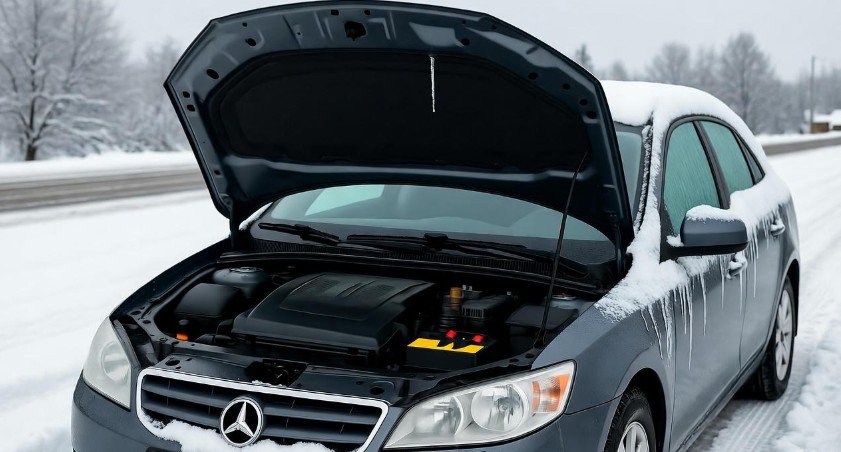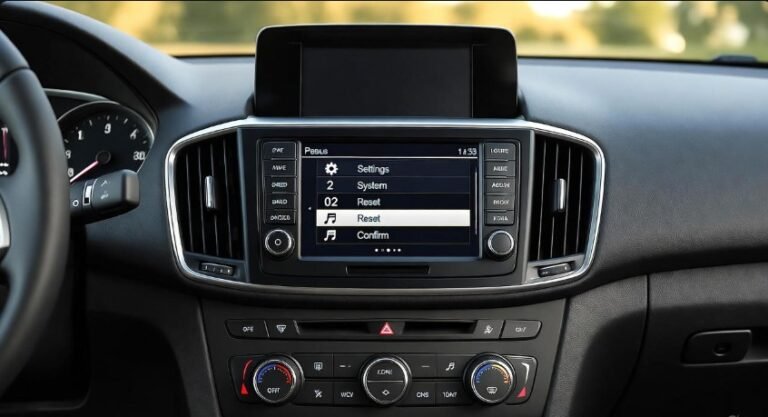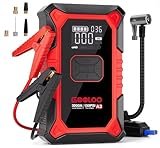Solved: Car Won’t Start in Cold But Battery is Good

There’s nothing more frustrating than stepping into your car on a freezing winter morning, turning the key, and hearing… nothing. You’ve checked the battery, and it’s in perfect condition. So why won’t your car start in the cold? It’s a scenario that many drivers face, and it can leave you scratching your head, wondering if you need a new battery or something more serious. Surprisingly, the root cause often lies beyond the battery. Cold temperatures can expose hidden issues in your car’s ignition system, fuel delivery, or electrical components. In this guide, we’ll explore the common causes and solutions, share maintenance tips for winter readiness, and show you how to avoid this stress in the future.
Why Cold Weather Can Be a Car’s Worst Enemy
Cold weather does more than just make us shiver—it affects your car in ways you might not expect. Even if the battery is fully charged, the chemical reactions inside it slow down as temperatures drop. This can reduce the battery’s effective power, making it harder to turn the engine over. But that’s not the only culprit. Cold weather thickens engine oil, increasing resistance when the starter motor tries to crank the engine. Fuel can also become less volatile, meaning it doesn’t ignite as easily. Even a car with a healthy battery can struggle if the ignition system or fuel system isn’t performing at its peak.
Think of it like this: your car is a team, and all its parts must work together. If one player is underperforming because of the cold, the whole team suffers. A battery might be in great shape on paper, but cold weather can still reveal weaknesses elsewhere.
Common Cold Weather Starting Issues
If your car won’t start in cold but the battery is good, there are several usual suspects to investigate:
-
Faulty Spark Plugs: Spark plugs create the spark that ignites fuel in your engine. Cold weather can make it harder for older or worn plugs to generate a strong enough spark, preventing your engine from firing.
-
Thickened Engine Oil: Winter-grade oil is crucial. Standard oil can become so viscous in freezing temperatures that the starter motor struggles to turn the engine.
-
Fuel Delivery Problems: Fuel lines, pumps, and injectors can be affected by cold, making it harder for the engine to receive the correct fuel-air mixture.
-
Electrical System Strain: The starter motor, ignition coil, and even wiring can become sluggish in cold weather, leading to starting failures.
Addressing these areas often resolves the problem without replacing a battery that’s actually in good condition.
Assessing the Battery Beyond the Surface
Even when a battery seems fine, it’s important to look deeper. Start by checking the connections. Loose or corroded terminals can reduce the electrical flow needed for cold starts. Next, examine the battery’s cold cranking amps (CCA). CCA measures a battery’s ability to start an engine in freezing temperatures. Even a battery that works well in mild conditions might not have enough CCA for winter mornings.
Battery age also matters. A battery over three to five years old might be on its last legs, even if it shows normal voltage. Testing the battery under load can reveal hidden weaknesses. These simple checks can save you hours of frustration by confirming whether the battery truly isn’t the problem or if something else is causing the cold-start struggle.
Maintenance Practices to Prevent Cold Weather Failures
Prevention is always better than cure, especially when it comes to winter car troubles. Certain maintenance practices can help your car start reliably even in freezing temperatures.
-
Battery Preheating Solutions: Devices like battery warmers or heated battery blankets keep the battery at an optimal temperature, ensuring it delivers full power.
-
Block Heaters: Warming the engine block can reduce oil viscosity and make cranking easier.
-
Cold Weather Fuel Additives: Additives prevent fuel line freezing and improve ignition, especially in diesel engines where fuel gel can be an issue.
-
Regular Spark Plug Inspection: Ensuring spark plugs are clean and functioning optimally keeps the ignition system ready for cold starts.
Taking these precautions can turn a stressful winter morning into a smooth, frustration-free experience.
Ignition System Assessment
Sometimes, the problem isn’t the battery at all. Your ignition system plays a pivotal role in starting the car.
-
Spark Plugs: Worn, fouled, or damaged spark plugs are one of the most common reasons a car won’t start in cold weather. A spark that is too weak may fail to ignite the fuel mixture.
-
Ignition Coils: These convert battery voltage into the high voltage needed for spark plugs. If a coil is weak, your car may crank but not start.
-
Starter Motor: Responsible for turning the engine over, a sluggish or failing starter motor can make a car seem like it won’t start, even if the battery is fully charged.
By systematically checking these components, you can identify the exact cause and avoid unnecessary battery replacements.
Fuel System Evaluation
Cold weather can also affect your fuel system, causing starting problems. Fuel pumps must deliver the correct pressure to the injectors, and clogged fuel filters can reduce flow. Diesel engines are particularly sensitive, as diesel fuel can gel in freezing temperatures.
Fuel injectors, too, need to be in optimal condition to deliver the precise fuel-air mixture. A malfunctioning injector may spray too much or too little fuel, making it difficult for the engine to ignite, especially when it’s cold. Evaluating each of these components can pinpoint the problem and prevent repeated cold-weather starting frustrations.
Cold Weather Battery Care
Even a good battery can struggle when temperatures plunge. Proper care in winter is essential to prevent starting failures. One effective solution is battery insulation. Wrapping your battery in an insulating blanket keeps it warmer, helping it maintain voltage and power output. Battery blankets or preheating pads are widely available and easy to use, especially for cars parked outside overnight.
Regular maintenance is equally important. Cleaning corrosion from the terminals ensures a strong electrical connection. Checking the battery charge periodically, particularly before cold snaps, helps avoid surprises. For older batteries, even if they appear functional, consider replacing them before winter hits. Think of your battery as a runner—cold weather slows it down, and extra care ensures it can still perform when needed.
Importance of Professional Diagnosis
Sometimes, despite careful maintenance, your car still won’t start in cold weather. That’s where a professional diagnosis becomes invaluable. Mechanics have advanced tools that can measure starter motor performance, spark strength, and fuel delivery pressure. These tools quickly identify the root cause, saving you from costly trial-and-error fixes.
Professional diagnosis can reveal hidden issues, such as a failing ignition coil, a partially blocked fuel injector, or an electrical fault in the starting system. Attempting to troubleshoot these problems without the right equipment can be frustrating and may even cause more damage. Trusting a qualified mechanic ensures that the problem is solved efficiently, and your car starts reliably, even on the coldest mornings.
Choosing the Right Mechanic
Finding the right mechanic can make a huge difference in resolving winter starting issues. Start by researching credentials. Look for certifications, years of experience, and customer reviews. Recommendations from friends or family can also point you to trustworthy professionals.
Next, compare services and prices. Some mechanics offer free diagnostic tests, while others may charge for a detailed inspection. Make sure the mechanic has experience with cold-weather issues and understands the nuances of your vehicle’s ignition and fuel systems. Choosing the right expert ensures your car is properly cared for and saves you repeated headaches when the temperature drops.
Quick Tips for Cold Weather Starting Success
Here are some practical tips that can make winter mornings much smoother:
-
Keep your fuel tank at least half full to reduce condensation in the fuel line.
-
Use the recommended oil viscosity for winter to ensure easier cranking.
-
Regularly inspect spark plugs and replace them if worn.
-
Consider a block heater for extremely cold climates.
-
Use a battery blanket or insulation for extra warmth.
These small steps add up, making it far less likely that you’ll face a frustrating no-start scenario in the dead of winter.
Common FAQs About Cold-Weather Starting Problems
1. Why won’t my car start in cold weather if the battery is fine?
Even if the battery is good, cold temperatures affect fuel volatility, oil viscosity, and spark efficiency, all of which can prevent the engine from starting.
2. Can old spark plugs cause starting issues in winter?
Yes. Worn or fouled spark plugs may fail to ignite the fuel mixture efficiently, especially in cold weather, leading to repeated failed start attempts.
3. Are fuel additives necessary for winter?
In very cold climates, fuel additives can prevent fuel line freezing and improve ignition, especially for diesel engines where fuel gel can occur.
4. How can I test my battery’s performance in winter?
Check the cold cranking amps (CCA) and ensure terminals are clean and tightly connected. A battery load test at low temperatures can reveal hidden weaknesses.
5. Should I always use winter-grade oil?
Yes. Thinner oils flow more easily in cold temperatures, reducing engine strain during startup.
6. What role does the starter motor play in cold starts?
The starter motor turns the engine over. If it’s weak or struggling due to low temperatures or electrical issues, your car may not start despite a good battery.
7. Is a professional mechanic always needed for cold start issues?
Not always, but for persistent problems, a professional diagnosis ensures accurate troubleshooting and prevents further damage.
Maintenance Table for Cold Weather Reliability
| Component | Maintenance Tip | Frequency |
|---|---|---|
| Battery | Check charge, clean terminals, use insulation | Monthly |
| Spark Plugs | Inspect, clean or replace | Every 12 months |
| Engine Oil | Use winter-grade oil | At oil change |
| Fuel System | Use fuel additives, check fuel filter | Seasonal |
| Starter Motor | Test performance | Every 12 months |
| Ignition Coil | Inspect for wear | Annually |
This table provides a simple overview to help you maintain winter reliability, keeping your car ready to start even in sub-zero temperatures.
Conclusion
Facing a situation where your car won’t start in cold but battery is good can be frustrating, but it’s usually solvable with the right approach. Cold weather challenges your vehicle in multiple ways—thickened oil, fuel volatility issues, spark inefficiencies, and electrical strain. By inspecting the ignition and fuel systems, maintaining your battery, using appropriate oils, and applying preventive measures like block heaters or battery blankets, you can significantly improve winter starting reliability.
Remember, a good battery is just one piece of the puzzle. Regular maintenance, careful observation, and professional guidance when needed ensure that your car remains dependable, even on the coldest mornings. With these insights, you can say goodbye to freezing mornings spent trying to coax your car to life and hello to smooth, reliable winter starts.




